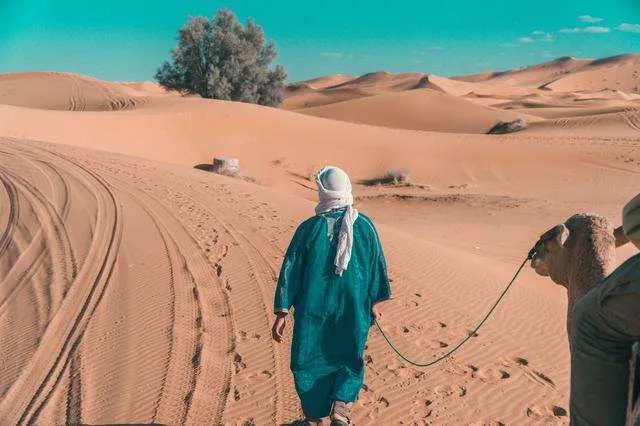The small villages on the edge of the desert are densely packed with nets, and what they want to catch is not fish, but the most precious resource in the desert - water.
To the north of Chile is a small village called Cuango, which is next to the Pacific Ocean and next to the Atacama Desert.
The special environment of alternating hot and cold makes the cold and humid air flow of the Pacific Ocean blend with the high temperature air flow of the desert, and it becomes foggy all year round.
But in addition to the fog, it can't rain a few times a year, and the residents of the village live in poverty and misery, and they bathe three times in a lifetime, once at birth, once before marriage, and once again when they die.
A Canadian physicist came here and made a surprising discovery. The lack of green desert, almost no sign of life, but here is full of spider webs, under the eaves, on the dry grass, a desolate and decadent scene.
Driven by curiosity about how the spiders survived, he zoomed in with a microscope to observe samples of spider webs. I found a spider web full of tiny droplets of water.
It turns out that these spider silks have a strong water absorption, it can lock the moisture in the fog firmly in the spider web, with this skill, these spiders almost dominate the desert.
Biomimicry, which has the advantages of small pollution and low cost, has been recognized by most countries in the world in recent years. If you imitate these spider silks, can you also absorb the same water?
With the support of the Chilean government, the Canadian expert has developed a man-made fiber network, selecting a network array in the most foggy areas in the local area, and everyone can make up for the formation of solar power plants.
The fog that passes through it is repeatedly intercepted, forming large water droplets, which drip into the flow trough under the net and become a new source of water.
These artificial spider webs alone can intercept an average of 10,580 liters of water per day, which not only meets the needs of local villagers, but also irrigates the land.
What are the examples of biomimicry around you, you may wish to share them in the comment area. #我要上 Headline # #冷知识 #
